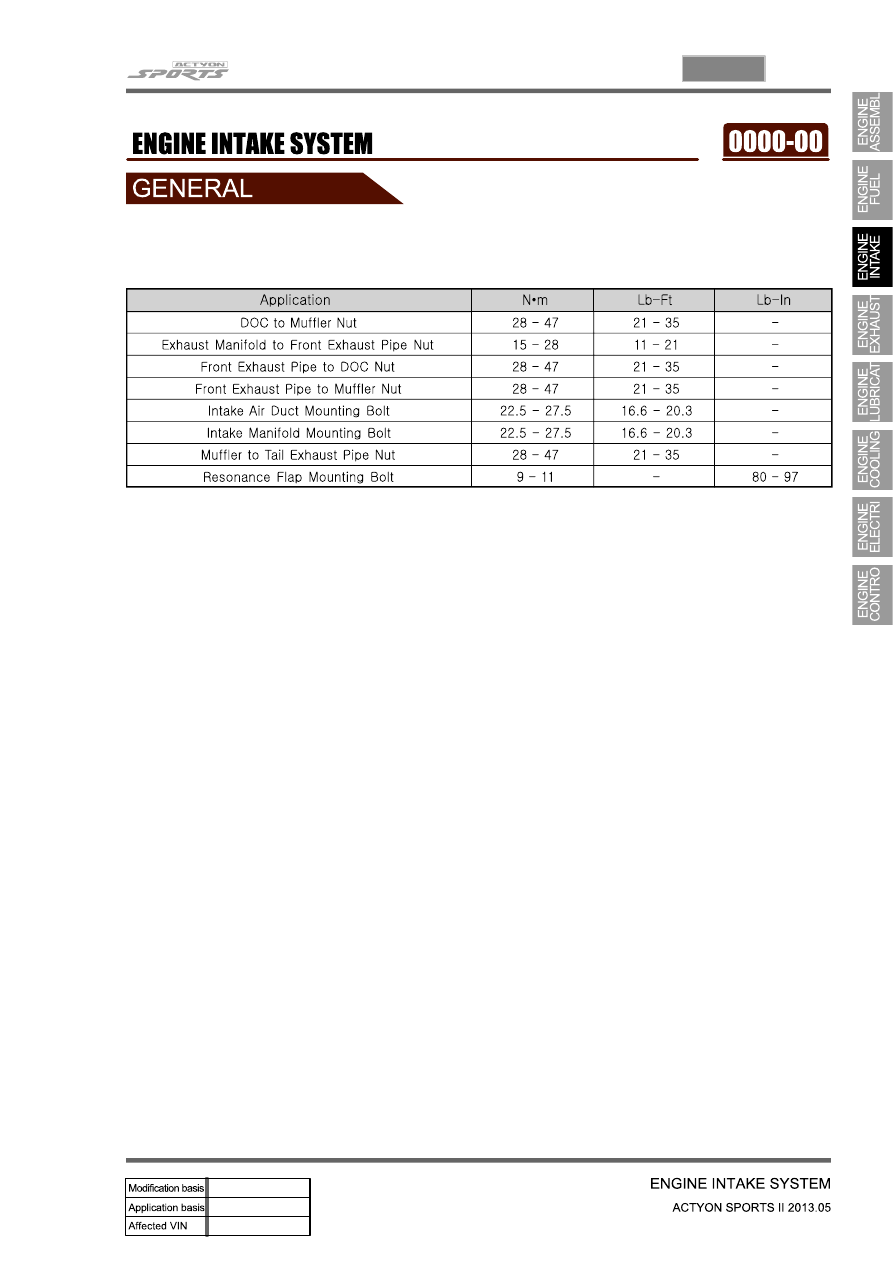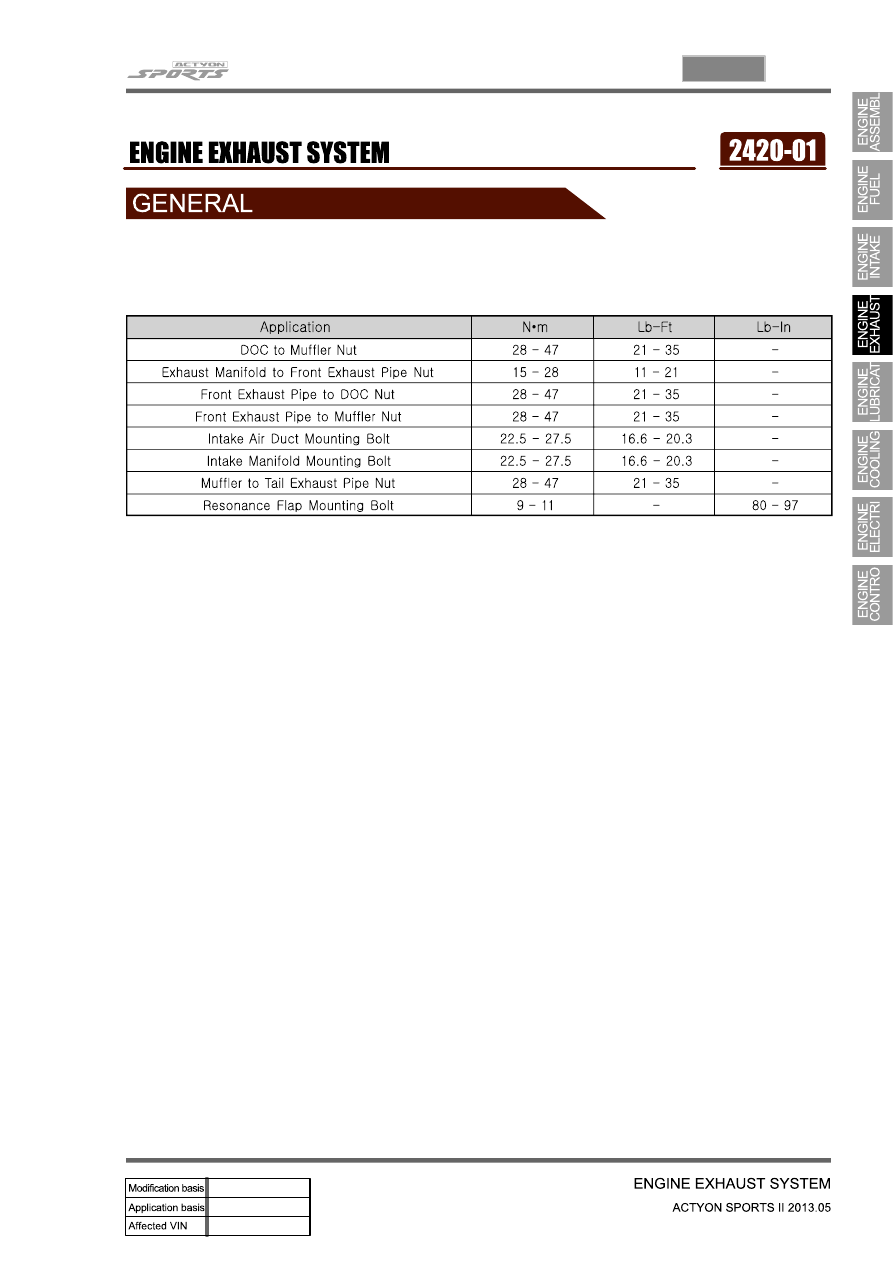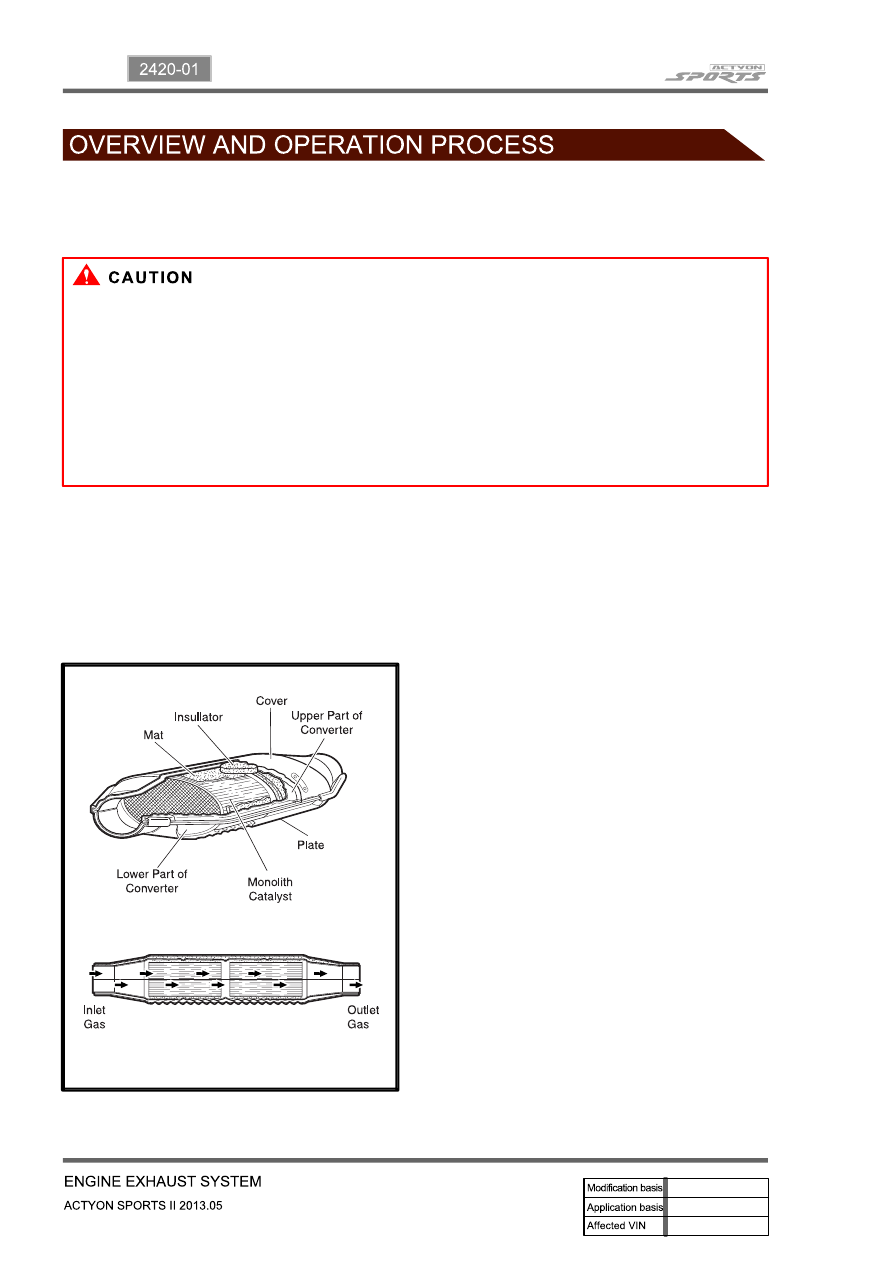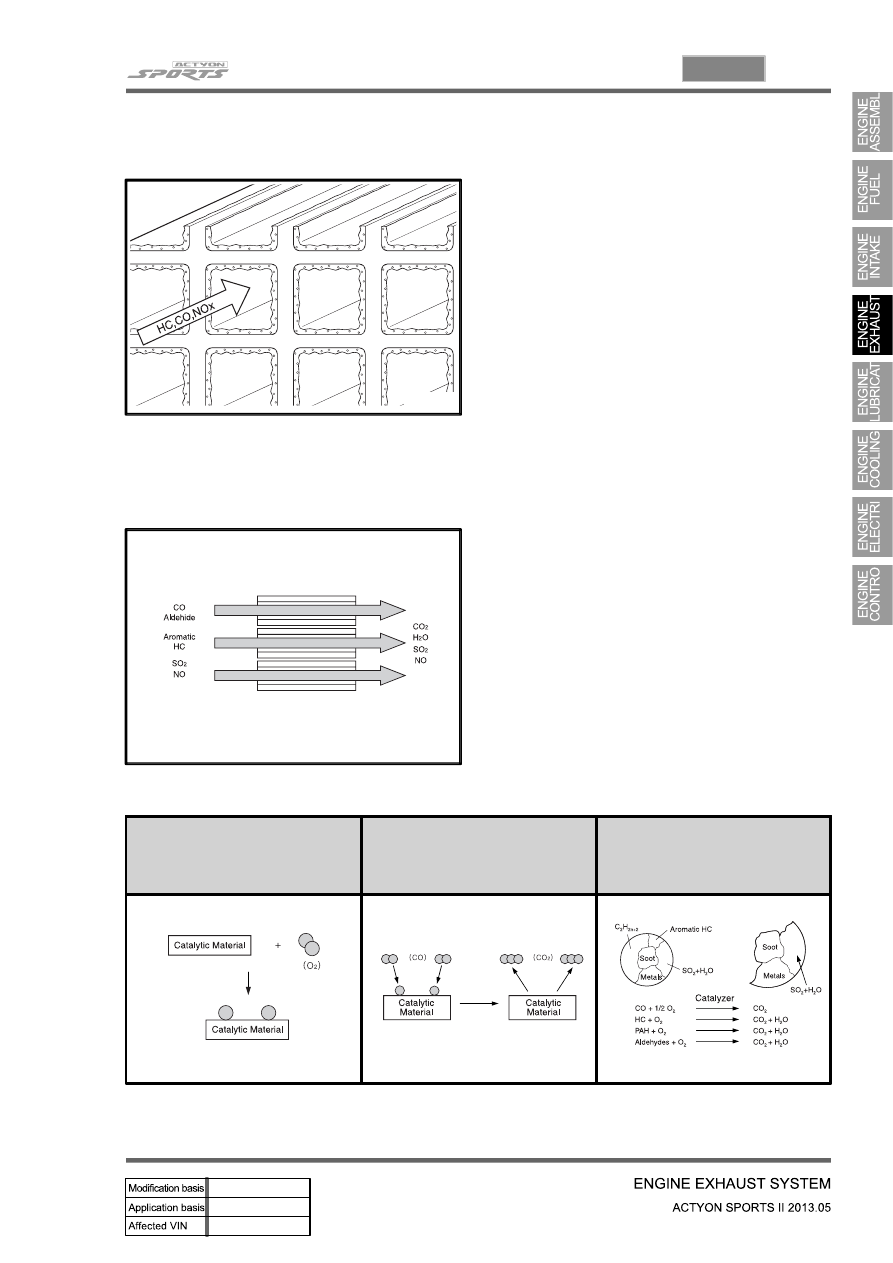SsangYong Actyon Sports II. Manual — part 70

03-3
1713-08
1. SPECIFICATIONS
(1) Fastener Tightening Specifications

04-3
2420-01
1. SPECIFICATION
(1) Fastener Tightening Specifications

04-4
1. DESCRIPTION AND OPERATION
1) Exhaust System
When you are inspecting or replacing exhaust system components, make sure there is adequate
clearance from all points on the underbody to avoid possible
overheating of the floor panel and possible damage to the passenger compartment insulation and trim
materials.
Check the complete exhaust system and the nearby body areas and trunk lid for broken, damaged,
missing or mispositioned parts, open seams, holes, loose connections, or other deterioration which
could permit exhaust fumes to seep into the trunk may be an indication of a problem in one of these
areas. Any defects should be corrected immediately.
2) Catalytic Converter (Gasoline Engine)
When jacking or lifting the vehicle from the body side rails, be certain that the lift pads do not contact
the catalytic converter, as this could damage the catalytic converter.
Use of anything other than unleaded fuel will damage the catalyst in the catalytic converter.
1.
2.
Catalytic Converter Structure
▶
The Catalytic converter of monolith type consists of 2
walled metal bodies which is made of Cordierite. The
principal element of converter consists of the materials
like Alumina or oxidized Serume in order to apply to
Ceramic Monolith. Washer coat operates first, and
catalytic metal elements (Pt, Pd, Rh) operates to
washer coat next.
Monolith type is lighter than other types, easy to
manufacture and quickly approaches to proper
temperature. Washer coat is used to make a contact
surface with exhaust gas bigger by adhering closely to
small holes
of inner layer. If a lead compound or phosphorus
adheres to the surface and the temperature rises, its
surface is decreased. The total area of general
monolith converter is about 45, 000~500,000ft3. (10
times of a football field) Generally Alumina (AL2 O3) is
used as a raw materialand its 7 phases of gamma,
delta, theta have big areas and high stability for the
temperature, and nowadays gamma Alumina is used
usually.

04-5
2420-01
Catalytic Converter and Temperature
▶
Catalytic converter has the normal function of
purification at a range of the temperature.
Because it has a weak point of decreasing of the
purification rate in the condition of continuous
high temperature, it should keep the temperature
range of 400 to 500°C for normal condition.
HC purification rate becomes better according to
the increase of temperature in the normal range
of temperature. CO purification rate becomes the
best near the temperature of 450°C, and NOx
does so near the temperature of 400 to 500°C.
Purification of Catalytic Converter
▶
Adhesion of soluble organic fraction (SOF)
below 180°C
Purification of soluble organic fraction (SOF)
over 180°C
Chemical reaction formula
-
-
SOF(HC)+O2 → CO2+H2O
2CO+O2 → 2CO2
2C2H6+7O2 → 4CO2+6H20
By catalytic action of two primary catalytic
converter, oxidation occurs in order to
decrease HC and CO.
-
Oxygen adheres to catalytic
material : below 180°C
Catalytic material supplies each
CO and HC with O2 for their
oxidation : above 180°C
Catalytic material conversion
process by DOC

Нет комментариевНе стесняйтесь поделиться с нами вашим ценным мнением.
Текст